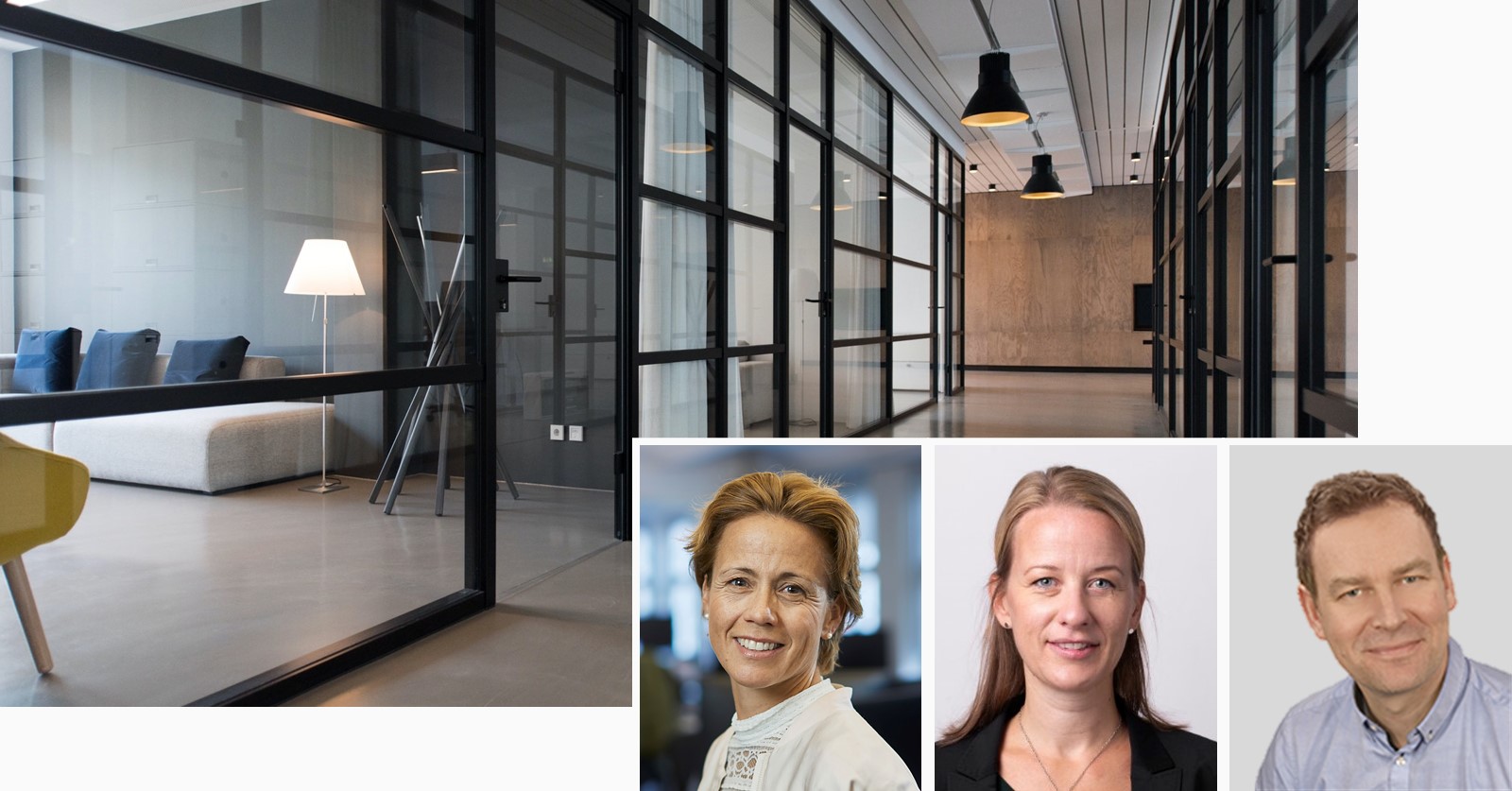Over the past months, CBRE has been engaged in close discussions with some of the largest companies in the Nordics on their recent learnings and future expectations of the workplace post Covid-19. Lise Dybwad, Hanna Mossfeldt and Tommi Ruohonen share their experiences from client surveys, workshops and discussions.
Most Nordic companies experienced a complete or partial lock-down of their offices, resulting in their crisis response plans being put to the test. The Covid-19 pandemic has accelerated trends and outlooks for the future of workplaces, and several companies are now revising their real estate and workplace strategies accordingly.
NORWAY: POSITIVE EXPERIENCES FROM REMOTE WORKING
Our Norwegian Workplace team recently conducted a survey amongst the largest occupiers in Norway which focused on their re-opening office plans and strategies. In general, companies reported a positive experience from this period of remote working (home office), and some companies even reported increased productivity in their organisation.
In the planning stages of office re-opening, the input from survey participants can be summarised into the following 3 categories.
- All companies are strictly adhering to local governmental guidelines when planning their office re-opening strategies.
- The degree to which offices have re-opened varies significantly. However, no companies plan on fully re-opening their offices until a later date and most likely not until after the summer holidays.
- Crisis management teams are highly focussed on developing best practices associated with office re-opening.
A common trend amongst all the surveyed companies is a clear focus on prioritising critical groups of employees in the early stages of office re-opening. Several companies reported that they are already looking into the possibility of revising their portfolio strategy and workplace concepts in response to the key learning points taken during COVID-19.
SWEDEN: ACCELERATED CHANGES IN OFFICE DESIGN
Swedish authorities have decided not to introduce strict lock-down guidelines; this has consequently resulted in companies taking a highly varied approach towards closing down. However, most companies have created guidelines which say that they prefer employees to work from home at least until the summer vacation period is over.
The Swedish Workplace team has investigated how occupiers are evaluating their current office strategy and future working models. Many companies report an immediate need to change their office design, and others plan to create a new workplace strategy during the upcoming year.
Below are some examples of the changes that are being considered:
- Fewer desks in the office. Companies expect that more individual work will be conducted from home. The need for collaborative areas in the office will increase as team working becomes a more integral part of a working day spent in the office.
- IT-upgrade: A significant focus will be on upgrading IT functions and systems in the office as well as investing in systems that support employees when working remotely.
- “Hotelification”. This trend is focused on offices providing people with high-quality office experiences and additional services, i.e. food delivery, cafe, laundry etc. These service offerings are expected to be implemented more widely.
Companies believe that employees will find new ways of working and increase the time they work remotely compared to pre-COVID-19.
FINLAND: THE NEW PURPOSE OF THE FUTURE OFFICE
Our Workplace team in Finland recently conducted a panel discussion where companies shared their views on the re-opening of workplaces, their long-term workplace strategies and the future of work. As in Norway, companies have followed strict governmental guidelines. However, most companies have started re-opening or are preparing for the re-opening of their offices.
As a response to the Covid-19 lock-down and sudden increase in remote working, many companies are now reviewing their workplace strategy, considering making changes to the way they work and examining a new purpose of the future office.
Companies report that, in most cases, individual performance has not suffered when working from home. In reality, routine tasks and individual working efficiency have improved in many cases which signify a need for implementing more flexible working policies.
Some of the disadvantages of working from home include: Reduced efficiency of creative work/workshops, teamwork and ad-hoc discussions/informal meetings. As a result, companies are considering adapting office spaces and providing more support for such collaborative activities in the office. In addition, some employees have experienced ergonomic issues and physical symptoms due to the increased amount of time spent working from home. Increased virtual working has also drastically increased peoples’ screen time. In certain cases, this has resulted in employees experiencing “video fatigue”which can have a negative impact on productivity levels.
On the other hand, numerous health benefits have also been reported as shown below:
- People experiencing less stress
- Sleep quality is reported to be better
- Stores have experienced the highest demand for bicycles in 25 years
Want to know more about the future of work and workplace concepts? Sign up and get a notification when we post our next blog.

